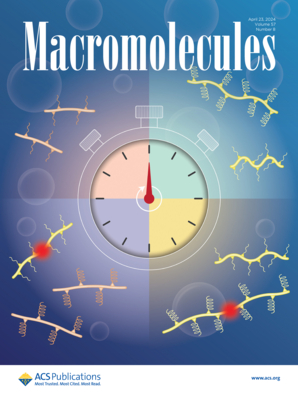Toward an AI Era: Advances in Electronic Skins
IF 5.1
1区 化学
Q1 POLYMER SCIENCE
引用次数: 0
Abstract
Electronic skins (e-skins) have seen intense research and rapid development in the past two decades. To mimic the capabilities of human skin, a multitude of flexible/stretchable sensors that detect physiological and environmental signals have been designed and integrated into functional systems. Recently, researchers have increasingly deployed machine learning and other artificial intelligence (AI) technologies to mimic the human neural system for the processing and analysis of sensory data collected by e-skins. Integrating AI has the potential to enable advanced applications in robotics, healthcare, and human–machine interfaces but also presents challenges such as data diversity and AI model robustness. In this review, we first summarize the functions and features of e-skins, followed by feature extraction of sensory data and different AI models. Next, we discuss the utilization of AI in the design of e-skin sensors and address the key topic of AI implementation in data processing and analysis of e-skins to accomplish a range of different tasks. Subsequently, we explore hardware-layer in-skin intelligence before concluding with an analysis of the challenges and opportunities in the various aspects of AI-enabled e-skins.

迈向人工智能时代:电子皮肤的进步
电子皮肤(e-skin)在过去二十年中得到了深入研究和快速发展。为了模仿人类皮肤的功能,人们设计了大量可检测生理和环境信号的柔性/可伸缩传感器,并将其集成到功能系统中。最近,研究人员越来越多地采用机器学习和其他人工智能(AI)技术来模拟人类神经系统,以处理和分析电子皮肤收集的感官数据。整合人工智能有可能在机器人、医疗保健和人机界面等领域实现先进的应用,但同时也面临着数据多样性和人工智能模型鲁棒性等挑战。在本综述中,我们首先总结了电子皮肤的功能和特点,然后介绍了感知数据的特征提取和不同的人工智能模型。接下来,我们讨论了人工智能在电子皮肤传感器设计中的应用,并探讨了在电子皮肤的数据处理和分析中实现人工智能以完成一系列不同任务的关键课题。随后,我们探讨了硬件层的皮肤内智能,最后分析了人工智能电子皮肤各方面的挑战和机遇。
本文章由计算机程序翻译,如有差异,请以英文原文为准。
求助全文
约1分钟内获得全文
求助全文
来源期刊

Macromolecules
工程技术-高分子科学
CiteScore
9.30
自引率
16.40%
发文量
942
审稿时长
2 months
期刊介绍:
Macromolecules publishes original, fundamental, and impactful research on all aspects of polymer science. Topics of interest include synthesis (e.g., controlled polymerizations, polymerization catalysis, post polymerization modification, new monomer structures and polymer architectures, and polymerization mechanisms/kinetics analysis); phase behavior, thermodynamics, dynamic, and ordering/disordering phenomena (e.g., self-assembly, gelation, crystallization, solution/melt/solid-state characteristics); structure and properties (e.g., mechanical and rheological properties, surface/interfacial characteristics, electronic and transport properties); new state of the art characterization (e.g., spectroscopy, scattering, microscopy, rheology), simulation (e.g., Monte Carlo, molecular dynamics, multi-scale/coarse-grained modeling), and theoretical methods. Renewable/sustainable polymers, polymer networks, responsive polymers, electro-, magneto- and opto-active macromolecules, inorganic polymers, charge-transporting polymers (ion-containing, semiconducting, and conducting), nanostructured polymers, and polymer composites are also of interest. Typical papers published in Macromolecules showcase important and innovative concepts, experimental methods/observations, and theoretical/computational approaches that demonstrate a fundamental advance in the understanding of polymers.
 求助内容:
求助内容: 应助结果提醒方式:
应助结果提醒方式:


